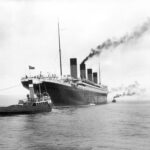Comparative advantage is a fundamental concept in economics that explains how countries can benefit from international trade, even when one country is more efficient at producing everything. It occurs when a country can produce a particular good or service at a lower opportunity cost than another country. This principle, developed by economist David Ricardo, is crucial for understanding global trade patterns and the benefits of specialization.
To grasp comparative advantage, it’s essential to first understand opportunity cost. Opportunity cost represents what you forgo when you choose one option over another. In production, it’s the amount of another good that must be sacrificed to produce one more unit of a specific good.
For instance, imagine a worker who can produce either apples or oranges. If in one hour, they can pick 10 apples or 5 oranges, the opportunity cost of picking 10 apples is 5 oranges, and conversely, the opportunity cost of picking 5 oranges is 10 apples (or 1 orange costs 2 apples, and 1 apple costs 0.5 oranges).
Comparative advantage builds on this idea. It’s not about being the best at producing something (absolute advantage); it’s about being relatively better at producing something compared to other goods or other countries. Even if a country can produce all goods more efficiently than another, comparative advantage suggests they should specialize in what they produce most efficiently relative to their other production possibilities.
Let’s illustrate this with a classic example involving two countries, England and Portugal, and two goods, wine and cloth.
Imagine:
- In England, producing 1 bottle of wine requires 20 hours of labor, and producing 1 bolt of cloth requires 10 hours of labor.
- In Portugal, producing 1 bottle of wine requires 10 hours of labor, and producing 1 bolt of cloth requires 20 hours of labor.
Portugal has an absolute advantage in producing both wine and cloth because it requires fewer labor hours to produce each good compared to England.
However, to find the comparative advantage, we must calculate the opportunity costs:
England:
- Opportunity cost of 1 bottle of wine = 2 bolts of cloth (because 20 hours could produce 2 bolts of cloth instead of 1 wine)
- Opportunity cost of 1 bolt of cloth = 0.5 bottles of wine (because 10 hours could produce 0.5 bottles of wine instead of 1 cloth)
Portugal:
- Opportunity cost of 1 bottle of wine = 0.5 bolts of cloth (because 10 hours could produce 0.5 bolts of cloth instead of 1 wine)
- Opportunity cost of 1 bolt of cloth = 2 bottles of wine (because 20 hours could produce 2 bottles of wine instead of 1 cloth)
By comparing opportunity costs:
- Portugal has a lower opportunity cost for producing wine (0.5 bolts of cloth vs. England’s 2 bolts). Therefore, Portugal has a comparative advantage in wine production.
- England has a lower opportunity cost for producing cloth (0.5 bottles of wine vs. Portugal’s 2 bottles). Therefore, England has a comparative advantage in cloth production.
Even though Portugal is more efficient at producing both goods in absolute terms, it is relatively more efficient at producing wine. Conversely, while England is less efficient at producing both goods in absolute terms, it is relatively more efficient at producing cloth.
This comparative advantage creates a basis for mutually beneficial trade. Portugal should specialize in wine production and trade wine for cloth from England. England should specialize in cloth production and trade cloth for wine from Portugal.
Let’s consider the benefits with an example. Assume both countries have 1000 labor hours available.
Without Trade:
Suppose England divides its labor equally: 500 hours for wine and 500 hours for cloth.
- Wine Production: 500 hours / 20 hours per bottle = 25 bottles of wine
- Cloth Production: 500 hours / 10 hours per bolt = 50 bolts of cloth
Suppose Portugal also divides its labor equally: 500 hours for wine and 500 hours for cloth.
- Wine Production: 500 hours / 10 hours per bottle = 50 bottles of wine
- Cloth Production: 500 hours / 20 hours per bolt = 25 bolts of cloth
Total Production without Trade: 75 bottles of wine and 75 bolts of cloth.
With Specialization and Trade:
England specializes in cloth:
- Cloth Production: 1000 hours / 10 hours per bolt = 100 bolts of cloth
- Wine Production: 0
Portugal specializes in wine:
- Wine Production: 1000 hours / 10 hours per bottle = 100 bottles of wine
- Cloth Production: 0
Total Production with Specialization: 100 bottles of wine and 100 bolts of cloth.
By specializing and trading, total production of both wine and cloth increases. If England and Portugal trade, for example, England trades 60 bolts of cloth for 60 bottles of wine from Portugal, both countries can consume more than they could without trade.
The principle of comparative advantage isn’t just theoretical; it’s observed in the real world. For example, countries like Bangladesh have a comparative advantage in textile production due to lower labor costs, while countries like Germany have a comparative advantage in manufacturing complex machinery due to technological expertise. Similarly, countries rich in natural resources often have a comparative advantage in producing resource-based goods.
Understanding comparative advantage is vital for businesses and policymakers. It helps businesses decide where to focus their production and sourcing, and it guides policymakers in shaping trade policies that promote economic growth and efficiency. By specializing in areas of comparative advantage and engaging in international trade, countries can achieve higher levels of production and consumption, leading to greater global prosperity.

